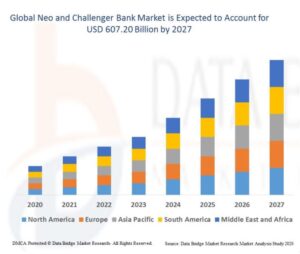As a finance professional, excel is one of the tools you can never work without. Excel is used for data consolidation and reporting on a day to day basis. We often set up templates that are used for repetitive processes. Sometimes we do have complex reporting that needs to be interactive too. We can use… Continue reading Summarizing Data in Excel: Pivot or Formulas?
Month: January 2021
Digitization: breaking barriers to financial growth for Credit Unions

Digital disruption is taking over and swiftly transforming the financial services industry. Due to their strong commitment to enhanced member experience and member satisfaction, credit unions especially need to capitalize on digitally-assisted channels that have become the primary modes of member engagement in a digital-first environment. If your Credit Union does not value digitization, then… Continue reading Digitization: breaking barriers to financial growth for Credit Unions
Monthly Newsletter | Jan 2021 | Issue 110
Featuring
- Combating Fraud in a Changing Financial Landscape
- Neo Banks: the next banking revolution?
- Tech Bites
- In the News
- Major Events
- Key Stats
Focus On
Combating fraud in a changing financial landscape
Covid-19 has caused upheaval to all our lives. The pandemic has given rise to a new pernicious threat: fraudsters, who prey on vulnerable individuals/organizations and seek to exploit this dreadful humanitarian crisis for their benefit. Banks and other financial providers’ fraud teams – even when facing the upheaval and disruption that has affected all of us – have dealt with a busy workload while the rest of the country lives under lockdown. As the fraud attempts are evolving just as quickly and pushing financial institutions to seek new strategies to manage risk and stay ahead of criminals.
Fraud Trends in Financial Services and Lending
The pandemic effect: The COVID-19 pandemic has had a significantly negative impact on financial services and lending firms. The volume of successful attacks has risen across segments during COVID-19, most dramatically among larger institutions, causing a spike in the cost of fraud. Both digital and non-digital firms have felt the negative impact of the pandemic, particularly banks and credit lenders that processed Paycheck Protection Program (PPP) applications. The rise in costs largely results from an increase in internal labor and/or external support to detect, investigate and recover losses, particularly for those handling PPP requests
Identity frauds: The pandemic has accelerated the move from checks and cash to contactless and electronic payments. The rise in person-to-person payments is a good example. But with that shift, there are more scams, more account takeovers, and more sophisticated identity fraud.
The Rising level of sophistication in fraud attacks: High-quality and low-cost compromised data continue to be readily available on the dark web. When coupled with a criminal’s application of machine learning, it puts more strain on fraud teams to continue adapting.
“Analysis from Experian and the National Hunter Fraud Prevention Service shows a rise in fraud rates, with a 33% increase across all financial products in April – the first full month of lockdown – when compared with previous monthly averages. The largest increase was in the car and other asset finance applications, which saw a rise of 181%, followed by saving accounts (up 28%). Fraudulent credit card applications (17%) and unsecured loans (10%) also went up”.
Steps to control frauds attacks
Effective fraud prevention strategies can be implemented both in Operational processes and Technological approaches.
Operational Processes: Educate customers center executives and customers about scams, account takeover, and identity theft. Share data within your organizations holistically data to drive the best insights. The more data you can leverage to truly drive a 360-degree view of the client, transaction, and engagement, the better for your business and fraud-mitigation efforts.
Role of Technology: AI, Machine Learning, and adaptive behavioral analytics are the best option to fight fraud
Tackling Risk with AI and ML
Machine learning helps data scientists efficiently determine which transactions are most likely to be fraudulent, while significantly reducing false positives. The techniques are extremely effective in fraud prevention and detection, as they allow for the automated discovery of patterns across large volumes of streaming transactions. ML systems allow for more accurate rule creation and pattern building, developing insights purely from data.
Integrate data across touchpoints and channels for stronger monitoring and more meaningful pattern recognition. Organizations should leverage the ability to consume and integrate data from different digital channels to create single views that could provide more insights than disparate monitoring.
AI and ML technologies can significantly improve the efficacy of early warning signal models, providing organizations with better insights into which accounts are headed towards non-performing assets (NPA) status.
Benefits of leveraging AI to counter fraud
Real-time fraud identification: An exponential spike in the number of real-time payments has led traditional rule-based fraud detection solution to come under pressure and result in false conclusions. Here AI enables financial firms to determine whether a transaction is genuine within a fraction of a second.
Predict and counter new-age frauds: Advancement in big data analytics and ML applications enable organizations to stay one step ahead of fraudsters by predicting and tagging any suspicious behavior that might lead to a new type of fraud.
Improved compliance: Elementary ML models can be easily developed to adhere to various compliance checks and protocols with minimal human intervention.
How Insight Consultants can help
Obtaining the right information from customers at the right time and in a fair manner would be the key for any company to be at an information advantage. Such a capability would require multiple integrations with enterprise applications and other third-party applications. We can help you set-up an ecosystem that ensures real-time data access and storage are protected and safe.
Keep Reading
Neo Banks: the next banking revolution?
Technology has seeped through every part of our lives, making much of our day to day business smarter and more efficient. Banking is no different. Neo Bank is one such. It is a type of bank that does not have any physical branch but offers all its banking services through digital/mobile channels like a smartphone or via web interface. Neo Banks / Challenger Banks identify their customer / target market very closely and solve their day to day needs / transactions with integrated banking and payments. Neo Banks are reinventing the practices and processes associated with traditional banking.
Neobanks: fertile ground for opportunities
Neobanks, or digital-only banks, continue to make a significant impact on the financial landscape. One reason they have grown so quickly in the past few years is that they often provide consumers with innovative services at no or very low monthly fees on banking services such as minimum balance maintenance, deposits, and withdrawals. Adoption by millennials, micro, small and medium enterprises (MSMEs), and those having sporadic incomes and earnings, embracement of innovative technologies and rising consumerism are some of the catalysts for the success for Neo banks.
Market statics for Neo and Challenger bank shows huge potential growth worldwide.
Why SMEs prefer Neobanks over traditional banks
Hyper enhanced customer service : Neobanks have significantly leaner business models and superior technologies at their disposal compared to traditional banks, providing ease and efficacy in services, such as seamless account creation, round-the-clock customer service supported by chatbots, near real-time cross-border payments, and artificial intelligence (AI) and machine learning (ML)-enabled automated accounting, budgeting and treasury services.
Automated services: Apart from providing primary banking services, Neobanks offer automated and near real-time accounting and reconciliation services for bookkeeping, balance sheets, profit and loss statements and taxation services such as GST-compliant invoicing, tax payments record keeping and reconciliation, on mobile platforms for affordable costs.
Transparency: Neobanks are transparent and strive to provide real-time notifications and explanations of any charges and penalties incurred by the customer.
Easy-to-use APIs: Most Neobanks provide easy-to-deploy and operate APIs to integrate banking into the accounting and payment infrastructure.
Deep insights: Most Neobanks provide dashboard solutions with highly enhanced interfaces and easy to understand and valuable insights for services such as payments, payables and receivables, and bank statements. It’s beneficial for businesses with significant expenditure and appropriate number of employees, to be provided with such insights, reduce expenditure and boost productivity and revenue.
Road Ahead
Of course, this new style of banking won’t be attractive to all, and understandably. The drawback of no physical branches to go into is you cannot speak to someone from your bank face to face. Speaking to a member of staff in person builds a level of rapport and trust that would be difficult to achieve otherwise.
Although with some of the challenges, Neobanks are gathering momentum. Attributes and offerings like accessibility, cost-effective multiple banking, and financial functionalities under one roof and personalization are some of the driving factors for Neobanks globally. They have a great potential to be a disruptor in banking and financial services. Neobanks future will depend mainly on how small businesses adapting challenges.
The outlook is bright and expansive for established Neo banks and new arrivals offering a personalized experience for niche user segments.
Tech Bites
Blazor: new addition to the ASP.NET Web Stack
Blazor is a relatively new addition to the ASP.NET web stack. It promises rapid development with fewer bugs.
Blazor comes in two flavors – Blazor WebAssembly and Blazor Server.
Blazor WebAssembly
This leverages the WebAssembly (Wasm) runtime in modern browsers to create a fast client-side application framework. While Wasm traditionally supports only lower-level languages, Blazor lets you code using standard .NET languages like C# and F#. It does this by embedding a .NET runtime over Wasm. This makes it possible to write rich client-side applications without using a ton of JavaScript.
Blazor Server
This runs the application on the server using the .NET 5 runtime. When the application is first loaded, a JavaScript file is downloaded that establishes a SignalR connection with the server. All user interactions are sent to the server using this connection and UI changes are received from the server back. This allows developers to have more control over the application flow. This may sound like it cannot scale – however the folks at Stack Overflow ran some tests and found that it is not really a problem. You can read about it here – https://stackoverflow.blog/2020/02/26/whats-behind-the-hype-about-blazor/
So, where would you use this?
Blazor WebAssembly is a great solution for highly interactive applications – it will get better as Wasm matures and will open up new possibilities. It is a good replacement for applications that previously used proprietary and potentially unsafe things like Flash. It is also good for the kind of apps that currently use a lot of client-side JavaScript that is a pain to maintain.
Blazor Server is good for most Line-Of-Business applications where there is a lot of business logic – the framework makes it possible to avoid a lot of client-server duplication and is easier to maintain in the long run. It is also good for content-heavy sites that have certain interactive elements.
Get insights to stay ahead in lending industry
Insights delivered monthly !
Mortgage Lending surges to 13yr high
UK lenders approved more than 100,000 mortgages in November, the most in 13 years. House purchases dropped in April and May as pandemic restrictions took hold.
But a stamp duty holiday, which expires in March, sparked a flurry of homebuying activity and helped buoy home prices. House buying and a recovering stock market contrast with rising unemployment and an ailing UK economy.
Figures last week from building society Nationwide showed house prices in December were up 7.3%. “The good news is that the banks are increasingly eager to lend and we have started to see major institutions return to lending to buyers with small deposits, in a boost for first time buyers,” said Hina Bhudia, a partner at Knight Frank Finance:
“The bad news is that many banks still haven’t worked through a backlog of applications that built up during the lockdown and subsequent surge in activity during 2020, and will likely struggle to cope if activity picks up during the first months of this year.”
The UK’s FTSE 100 rose almost 2% as it continues to recover ground lost since lockdowns in the UK began. Low interest rates are helping fuel an increase in asset prices even as the economy is hit and more people lose their jobs.
In the UK, the unemployment rate rose to 4.9% in the three months to October, with the jobless total up to 1.7 million people.
Redundancies hit a record high over the period.
The Office for Budgetary Responsibility, the government’s independent forecaster, predicts the UK economy will have shrunk by 11.3% in 2020 – the biggest decline in 300 years. It expects unemployment to peak at 9.7%.
Credit Unions and members benefit from new PPP rounds
Credit unions are preparing for another round of Paycheck Protection Program loans this month as many business members have been stretched thin by nine months of disruption from the pandemic.
The $900 billion relief package worked out by Congress in December includes $284 billion for another round of Paycheck Protection Program (PPP) loans for small businesses. The loans are guaranteed by the U.S. Small Business Administration and are designed to be forgiven in whole or part by the SBA.
CUNA and other trade groups had been pushing Congress for more relief, including PPP funding.
In the first rounds, Greater Commercial Lending granted $583 million out of a $600 billion pool. Greater Commercial Lending’s share in the first rounds was about 0.1%. If that holds for the new round, as Gilpin expects, it would grant about $276 million this year.
From April through July, 934 credit unions granted 1.2 million PPP loans for $9.7 billion, supporting 1.2 million jobs, according to SBA data. Banks accounted for 95% of the $521 billion in PPP loans granted through July 31. Credit unions granted 2% of the total value of PPP loans, but 4% of the number of loans.
This round allows previous recipients to apply again, but has restrictions designed to ensure small businesses get more of the money, including lowering the maximum loan from $10 million last year to $2 million this year. Loan proceeds can be used for a broader array of expenses and remain forgivable, and the law contains new provisions designed to allow more tax deductions. The program allows credit unions to deepen their relationships with business members. And it has more tangible benefits as well. For one thing, SBA pays lenders fees when the amounts are forgiven.
Fees are 5% of the amount granted for loans up to $350,000, and 3% for loans between $350,000 and $2 million and 1% for loans of $2 million or more. In the previous rounds, if all credit union loans had been under $350,000, they would have received $485 million in fee income. An amount that size would have given a significant boost to non-interest income, which rose 14.4% to $12.2 billion. It also comes out to an annualized gain of 0.07% of average assets in the second quarter when annualized returns on average assets was 0.61% and another 0.07% in the third quarter when ROA was 0.80%.
The PPP loans accounted for about 4.6% of bank loan portfolios, but less than 1% of credit union loans as of Sept. 30. However, PPP loans also had an outsized impact on parts of credit union portfolios.
For example, the volume of all non-real estate loans originated between April 1 and Sept. 30 was $179.5 billion, 3.7% greater than the six month period in 2019. However, if you removed the $9.7 billion in PPP loans, non-real estate loan production fell 1.9%. PPP loans had to be recorded somewhere, and the NCUA chose to instruct credit unions to place them on the balance sheet under the “All Other Unsecured Loans/Lines of Credit” account — typically made up of consumer signature loans.
PPP loans are excluded from caps for Member Business Loans, so placing them under unsecured personal loans keeps them out of commercial loan calculations. The balance was $53.7 billion as of Sept. 30, up 17.7% from a year earlier. Total loans are up just 6.3%. “That category over the last 12 months had grown faster than any other category,” van Rijn said. “That’s probably a big part of it — the PPP lending. Once they are forgiven, that could cause a drop in this category.” For example, if PPP loans were excluded from the Sept. 30 balance, unsecured personal loans would have fallen 3.6% to $44 billion. And while the loans boost a credit union’s assets, van Rijn said the amount is excluded from its net worth calculations, preventing the loans from eroding net worth ratios.
Global Lender revenue fell 12% YoY in 2020
Global revenue for agent lenders fell by 11.6 percent year-over-year (YoY) in 2020, representing $7.66 billion, according to DataLend, the market data division of EquiLend.
Despite a year high volatility, usually an indicator of strong returns for the securities finance universe, the market failed to replicate the $8.66 billion returns for lenders recorded in 2019. Global revenue was also down 20.7 percent compared to the $9.96 billion in record-setting 2018. Global broker-to-broker activity, where broker-dealers lend and borrow securities from each other, totalled an additional $2.87 billion in revenue in 2020, a 1.6 percent decrease YoY.
The top five revenue-generating securities in the global securities lending market in 2020 were US IT firms Match Group, cannabis product manufacturer Canopy Growth, German car battery manufacturer Varta, Inovio Pharmaceuticals and electric truck manufacturer Nikola Corp, which together generated $482 million in lending revenue in 2020.
The data provider says the decline in lender-to-broker revenue was experienced across equity markets globally: Americas (-3.4 percent), Europe, the Middle East and Africa (EMEA) (-19.2 percent) and Asia Pacific (-26.8 percent). Across fixed income globally, corporate debt was down 37 percent, while government debt finished the year up 15.3 percent relative to 2019.
As the COVID-19 pandemic first took hold in Asia and then Europe in the opening months of 2020, the subsequent equity markets drop-offs led to lower on-loan volumes, while the spate of short selling bans across both regions ensured lacklustre revenues in the first six months of the year.
Meanwhile, Nancy Allen, global product owner of DataLend, says that in the Americas, “while equity loan values declined YoY, average fees increased, driven by a number of COVID- and non-COVID related names trading at very high fees to borrow”.
“However,” Allen states, “as the year progressed, short positions in US equities dropped to significant lows as markets not only rebounded but hit record highs. She adds: “As a result, the lending market experienced depressed fees and on-loan balances, which drove the considerable decline in revenue. As we approached the year-end, equity lending revenue in the Americas and EMEA did increase as there was a slight uptick in short activity.”
Events
International Financial Virtual Expo 2021
10-11, Feb, 2021, iFEX, the first financial virtual expo in the MENA region
Key Stats
Central Bank Interest Rates and Current Libor Rates
| GBP Libor (overnight) | Interest (23-09-2020) | Central Banks | Interest Rates |
| Euro Libor | -0.58657% | American Interest rate (FED) | 0.25% |
| USD Libor | 0.08325% | Australian Interest rate (RBA) | 0.10% |
| CHF Libor | -0.79860% | British Interest Rate (BoE) | 0.10% |
| JPY Libor | -0.10283% | Canadian Interest Rate (BOC) | 0.25% |
| GBP Libor | 0.04763 % | Japanese Interest Rate (BoJ) | -0.10% |
Covid-19 has caused upheaval to all our lives. The pandemic has given rise to a new pernicious threat: fraudsters, who prey on vulnerable individuals/organizations and seek to exploit this dreadful humanitarian crisis for their benefit. Banks and other financial providers’ fraud teams – even when facing the upheaval and disruption that has affected all of us – have dealt with a busy workload while the rest of the country lives under lockdown. As the fraud attempts are evolving just as quickly and pushing financial institutions to seek new strategies to manage risk and stay ahead of criminals.
Fraud Trends in Financial Services and Lending
The pandemic effect: The COVID-19 pandemic has had a significantly negative impact on financial services and lending firms. The volume of successful attacks has risen across segments during COVID-19, most dramatically among larger institutions, causing a spike in the cost of fraud. Both digital and non-digital firms have felt the negative impact of the pandemic, particularly banks and credit lenders that processed Paycheck Protection Program (PPP) applications. The rise in costs largely results from an increase in internal labor and/or external support to detect, investigate and recover losses, particularly for those handling PPP requests
Identity frauds: The pandemic has accelerated the move from checks and cash to contactless and electronic payments. The rise in person-to-person payments is a good example. But with that shift, there are more scams, more account takeovers, and more sophisticated identity fraud.
The Rising level of sophistication in fraud attacks: High-quality and low-cost compromised data continue to be readily available on the dark web. When coupled with a criminal’s application of machine learning, it puts more strain on fraud teams to continue adapting.
“Analysis from Experian and the National Hunter Fraud Prevention Service shows a rise in fraud rates, with a 33% increase across all financial products in April – the first full month of lockdown – when compared with previous monthly averages. The largest increase was in the car and other asset finance applications, which saw a rise of 181%, followed by saving accounts (up 28%). Fraudulent credit card applications (17%) and unsecured loans (10%) also went up”.
Steps to combat fraud attacks
Effective fraud prevention strategies can be implemented both in Operational Processes and Technological Approaches.
Operational Processes: Educate customers center executives and customers about scams, account takeover, and identity theft. Organizations must ensure access to its data, all of the time. The more data you can leverage to, truly drive a 360-degree view of the client, transaction, and engagement, the better for your business and fraud-mitigation efforts.
Role of Technology: AI, Machine Learning, and adaptive behavioral analytics are the best option to fight fraud.
Tackling Risk with AI and ML
Machine learning helps data scientists efficiently determine which transactions are most likely to be fraudulent, while significantly reducing false positives. The techniques are extremely effective in fraud prevention and detection, as they allow for the automated discovery of patterns across large volumes of streaming transactions. ML systems allow for more accurate rule creation and pattern building, developing insights purely from data.
Integrate data across touchpoints and channels for stronger monitoring and more meaningful pattern recognition. Organizations should leverage the ability to consume and integrate data from different digital channels to create single views that could provide more insights than disparate monitoring.
AI and ML technologies can significantly improve the efficacy of early warning signal models, providing organizations with better insights into which accounts are headed towards non-performing assets (NPA) status.
Benefits of leveraging AI in combating fraud
Real-time fraud identification: An exponential spike in the number of real-time payments has led traditional rule-based fraud detection solution to come under pressure and result in false conclusions. Here AI enables financial firms to determine whether a transaction is genuine within a fraction of a second.
Predict and counter new-age frauds: Advancement in big data analytics and ML applications enable organizations to stay one step ahead of fraudsters by predicting and tagging any suspicious behavior that might lead to a new type of fraud.
Improved compliance: Elementary ML models can be easily developed to adhere to various compliance checks and protocols with minimal human intervention.
How Insight Consultants can help in combating fraud
Obtaining the right information from customers at the right time and in a fair manner would be the key for any company to be at an information advantage. Such a capability would require multiple integrations with enterprise applications and other third-party applications. We can help you set-up an ecosystem that ensures real-time data access and storage are protected and safe. Contact Us
Technology has seeped through every part of our lives, making much of our day-to-day business smarter and more efficient. Banking is no different. Neo Bank is one such. It is a type of bank that does not have any physical branch but offers all its banking services through digital/mobile channels like a smartphone or via web interface. Neo Banks / Challenger Banks identify their customer / target market very closely and solve their day to day needs / transactions with integrated banking and payments. Neo Banks are reinventing the practices and processes associated with traditional banking.
Neo banks: fertile ground for opportunities
Neo banks, or digital-only banks, continue to make a significant impact on the financial landscape. One reason they have grown so quickly in the past few years is that they often provide consumers with innovative services at no or very low monthly fees on banking services such as minimum balance maintenance, deposits, and withdrawals. Adoption by millennials, micro, small and medium enterprises (MSMEs), and those having sporadic incomes and earnings, embracement of innovative technologies and rising consumerism are some of the catalysts for the success for Neo banks.
Market statics for Neo and Challenger bank shows huge potential growth worldwide.

Why SMEs prefer Neo banks over traditional banks
Hyper enhanced customer service : Neo banks have significantly leaner business models and superior technologies at their disposal compared to traditional banks, providing ease and efficacy in services, such as seamless account creation, round-the-clock customer service supported by chatbots, near real-time cross-border payments, and Artificial intelligence (AI) and Machine learning (ML)-enabled automated accounting, budgeting and treasury services.
Automated services: Apart from providing primary banking services, Neo banks offer automated and near real-time accounting and reconciliation services for bookkeeping, balance sheets, profit and loss statements and taxation services such as GST-compliant invoicing, tax payments record keeping and reconciliation, on mobile platforms for affordable costs.
Transparency: transparent and strive to provide real-time notifications and explanations of any charges and penalties incurred by the customer.
Easy-to-use APIs: provide easy-to-deploy and operate APIs to integrate banking into the accounting and payment infrastructure.
Deep insights: provide dashboard solutions with highly enhanced interfaces and easy to understand and valuable insights for services such as payments, payables and receivables, and bank statements. It’s beneficial for businesses with significant expenditure and appropriate number of employees, to be provided with such insights, reduce expenditure and boost productivity and revenue.
Road Ahead
Of course, this new style of banking won’t be attractive to all, and understandably. The drawback of no physical branches to go into is you cannot speak to someone from your bank face to face. Speaking to a member of staff in person builds a level of rapport and trust that would be difficult to achieve otherwise.
Although with some of the challenges, Neo banks are gathering momentum. Attributes and offerings like accessibility, cost-effective multiple banking, and financial functionalities under one roof and personalization are some of the driving factors globally. They have a great potential to be a disruptor in banking and financial services. Neo banks future will depend mainly on how small businesses adapting challenges.
The outlook is bright and expansive for established Neo banks and new arrivals offering a personalized experience for niche user segments.







